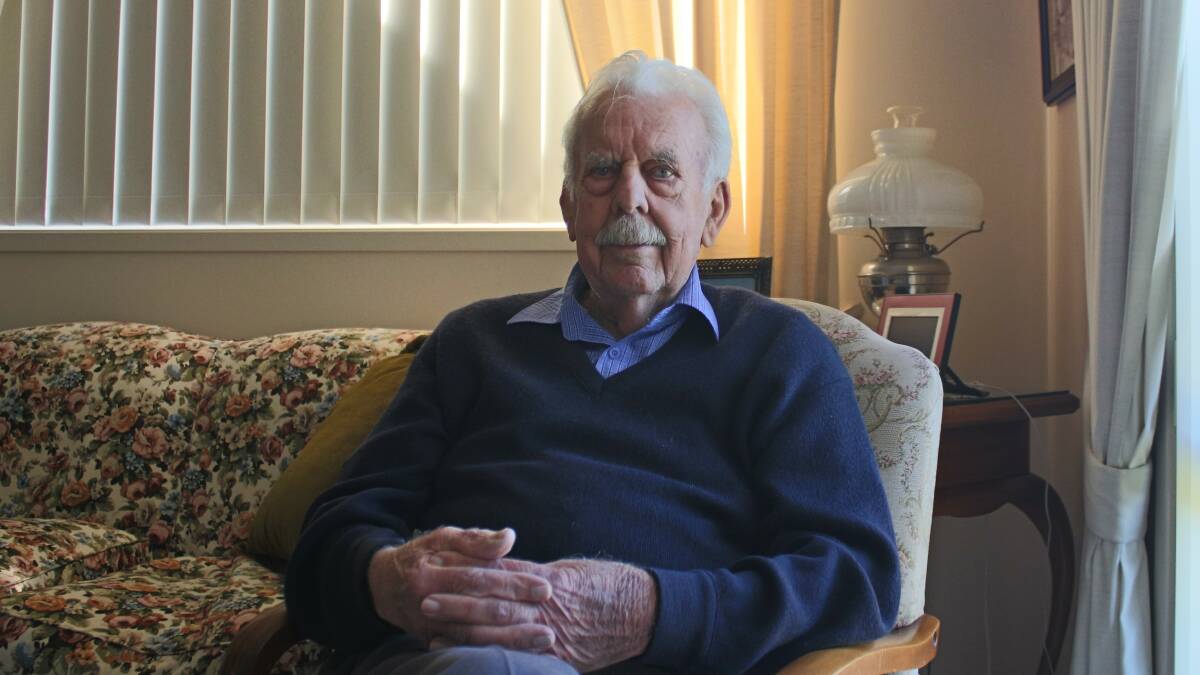
Gordon Wheatley has done a lot in the 41 years since he was pronounced clinically dead on a bed in Sydney's Royal North Shore hospital.
Subscribe now for unlimited access.
or signup to continue reading
He was the first human to receive antivenom for an Atrax robustus - Sydney funnel-web spider - bite.
The bookshelves in his Broulee home on the NSW south coast are lined with spines capturing Mr Wheatley's second chance at life: Lonely Planet guides, nature photography compilations and wilderness area manuals.
The 91-year-old has travelled to England and the continent, around the world in 40 days, and flown over Antarctica.
The bookshelves frame a television where Mr Wheatley has pre-fast-forwarded the VCR tape to be paused on static black and white picture of a scientist behind a desk.
The TV is central on the bookshelf, and indeed all the books - Mr Wheatley's second lease of life - would not exist without the story told by the VCR tape.
The scientist pictured is Dr. Struan Sutherland - "the reason why I am here today," Mr Wheatley said.
READ MORE:
On Friday night, January 31 1981, Mr Wheatley went to change a fused lightbulb in the dining room of his Cheltenham home.
He stepped on something sharp, which upon inspection he realised was a male funnel-web.
He raced upstairs to change outfits for the hospital, in so doing pumping the venom faster around his body. Within minutes he had severe palpitations, was hyperventilating and sweating. He passed out en route to Ryde Hospital. By the time he was transferred to the Royal North Shore Hospital, his pulse was three times the normal rate; his blood pressure double the average.
Mr Wheatley didn't know it at the time - in fact, very few in the community were aware - that just 30 days earlier, the funnel-web antivenom Dr Sutherland had been working on for more than 15 years had been approved by the government for use on humans.
Dr Sutherland had persevered with the antivenom against repeated hurdles. Government cutbacks were forcing laboratories to become self-funded, and funnel-web research was not considered effective enough for future funding. He had one final attempt to create an antivenom before the funding disappeared.
Dr Sutherland was convinced an antivenom was possible.
By 1981, there were 13 recorded deaths caused by funnel-web bites. Just 12 months before Mr Wheatley was bitten, James Cully, a two-year-old boy, had been fatally bitten on the Central Coast.
Now Dr Sutherland believed he had finally solved the problem, and the antivenom was ready to be administered to whomever was next unlucky enough to be bitten.
It was Mr Wheatley.
"They applied one ampoule of the antivenom to no effect," Mr Wheatley said. He was pronounced clinically dead.
"So Malcolm Fisher - the surgeon at North Shore - phoned Dr Sutherland in Melbourne in the middle of the night, who replied 'he is dead, just keep popping the stuff into him.'"
Four ampoules of the antivenom were administered, and within 15 minutes, Mr Wheatley's was coming back to life.
He was kept overnight and discharged the next day.
When he awoke the next morning, Dr Sutherland thought the ordeal was a dream - a hallucination as his brain merged work with rest - and had to check his bedside notes to confirm Mr Wheatley's case was reality.
It was reality; the antivenom had worked.
"No one has died since," Mr Wheatley said.
With another chance at life, Mr Wheatley retired 18 months later, fulfilling a childhood dream of buying a farm out of Moruya.
He is involved in the men's shed, and meets weekly with a group of local men at his residential aged-care facility to stay connected.
"I've done a lot of things," he said, "with this second chance at life.
"But it is the scientists that deserve all the credit. What they did is incredible."
When he heard Dr Sutherland was unwell and nearing the end of his life, Mr Wheatley phoned him in Melbourne.
"The first thing he said to me was 'how the bloody hell are you?'," Mr Wheatley said.
"He died a few weeks later."
Mr Wheatley never met the man who saved his life face to face.


